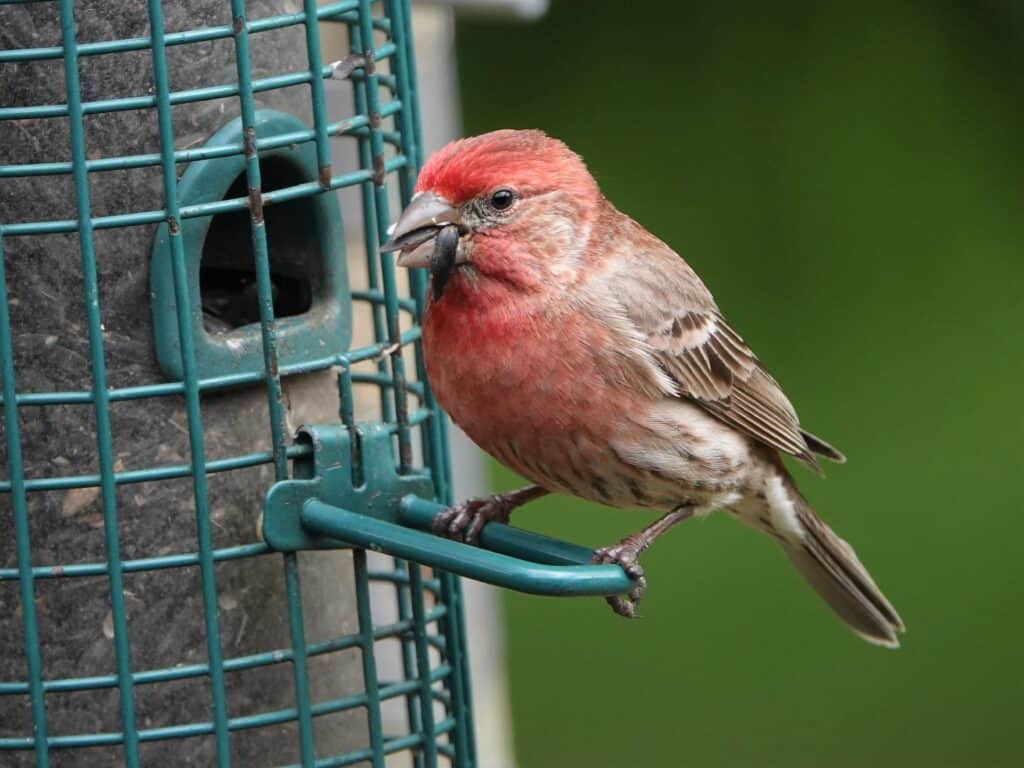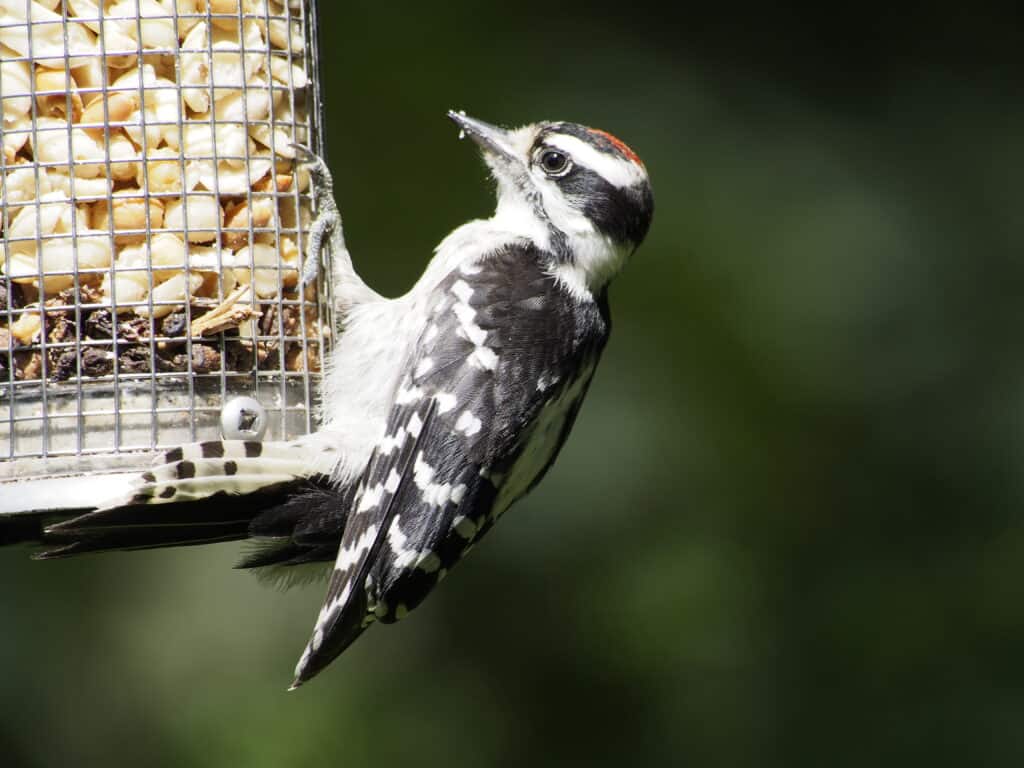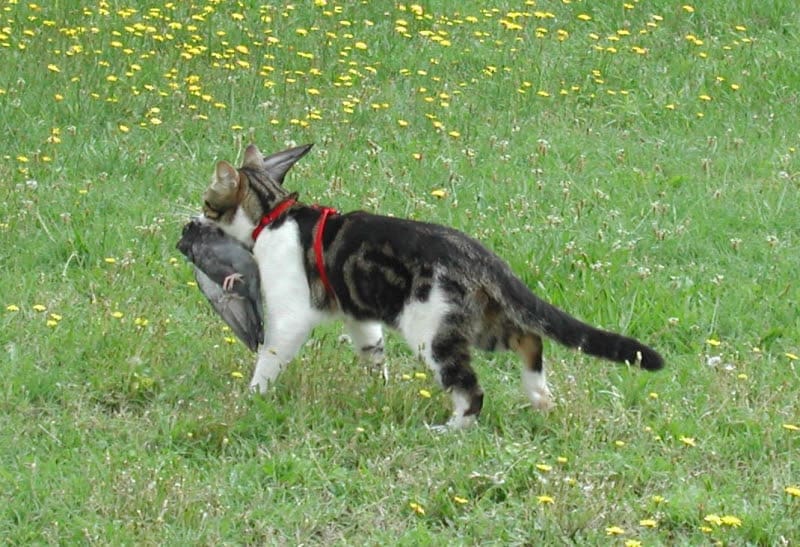Many discovered this pastime while stuck at home during pandemic lockdowns
Peterborough Examiner – November 4, 2022 – by Drew Monkman
Although the store owners themselves might feel a little sheepish saying so, the global Covid-19 pandemic provided a huge boost to the sale of bird seed and bird feeding accessories. This was not surprising. People were stuck at home and birds were something they could enjoy while staying socially distanced. Longtime backyard birdwatchers were filling their feeders more regularly, while people who were just discovering birds were buying their first feeder sets and field guides.
For many people, watching the goings-on at the feeder was one of the few pandemic bright spots and even a way to manage stress. Feeders provide the opportunity to see birds close up and to fully appreciate their vibrant colours, interesting behaviors, and unique personalities. As the seasons change, there’s also new species to look at. You really never know what exciting newcomer might show up. These experiences build a connection with nature and, just as importantly, with conservation. It’s impossible to care about birds without becoming deeply concerned about issues like climate change and habitat destruction.
Getting started
It’s looking like this fall and coming winter will see the arrival of a higher-than-average mix of species from the north. Already, flocks of highly sought-after evening grosbeaks are turning up in Peterborough and the Kawarthas. This beautiful northern finch is one of the species that first sparked my interest in nature.
If you’re new to feeding birds, I’d like to share some recommendations. First, I suggest purchasing a sunflower seed tube feeder – preferably squirrel-proof – that can either be hung or mounted to a pole. Buying a feeder pole may also be necessary if you have nowhere to hang the feeder. You may wish to get one that can accommodate multiple arms from which to suspend different feeders. I would also recommend buying a baffle to prevent squirrels from climbing up.
As for location, keep in mind that birds like cover and shelter. If you have the option, place the feeder near shrubs or trees. Conifers are ideal. I planted a stand of eight white cedars near our kitchen window for this purpose. They offer a resting place for birds between feeding sessions and a safe haven should a predator appear on the scene. I have my feeder pole about 8 feet from the closest branch so that squirrels can’t easily jump onto it.
Black oil sunflower seed will attract the most species. It has a high fat content and is small enough for little birds to handle. If you want to attract woodpeckers, the easiest way is to put up a mesh metal tube for shelled peanuts. Peanuts will also attract nuthatches, chickadees, blue jays and more. At some point, you may also want to add a nyger seed feeder for finches like pine siskins, common redpolls and American goldfinches. The latter, however, will also eat sunflower seeds.

You will also attract more bird species by spreading seeds such as millet on the grass and snow. Many birds such as juncos and sparrows are strictly ground feeders and almost never venture onto a feeder. With a bit of luck, an uncommon species like a fox sparrow or eastern towhee might even show up. I try to scatter the seed widely enough so that the squirrels can only glean a small part of it.
I also have a birdbath close to the feeders. There are many days when activity at the bath is almost non-stop. Bathing birds also provide great entertainment. In winter, I replace the concrete bath with a plastic heated model. Some can even be mounted on decks.
You can still enjoy feeding birds if you have a tiny yard, or no yard at all. Window or balcony mounted feeders are a good option. To mount a bird feeder to your balcony railing, all you need is a railing clamp with a pole and hook. Window feeders affix to any glass surface using suction cups. I have one on my office window which attracts all kinds of birds.
When to feed
Many people make the mistake of waiting until winter has arrived before putting up their feeders. The greatest bird diversity at feeding stations actually occurs in the spring and fall, especially during October and April through mid-May. By putting out food in the fall, you’re also providing a welcome source of energy for the birds’ long flight to their wintering grounds.
There is no problem feeding birds in summer, either. I keep my peanut and nyger seed feeders filled all year long. If you live in the country near a woodlot, rose-breasted grosbeaks and their young will often come to sunflower feeders during the summer months.
As for hummingbird and oriole feeders, be sure to get them out early. Both of these species start arriving back in the Kawarthas in early May when wild food is in short supply and frigid weather is still possible. At this time of year, a feeder might actually make a difference to their survival. Orioles are also attracted to oranges, which you can cut in half and set out where they can peck at the juice and pulp.

Feeding responsibly
Responsible feeding means keeping the birds as safe as possible. To this end, be sure to keep your cat indoors. Outdoor cats are the leading cause of bird mortality. Clean your feeders at least once a month and remove any mildewy seeds. If window strikes become a problem, you can put streamers in front of the window, lower the blinds or apply window markers available from featherfriendly.com.
It’s true that feeding birds might attract a Cooper’s hawk, merlin or even a barred owl. Just keep in mind that these raptors are part of the native food chain and have a right to eat as much as any other bird. They are also fascinating to observe in their own right. If predation becomes too much of a problem, you can simply take your feeders down for a few days.
You’ll find all you need to feed birds successfully and responsibly – and have all your questions answered – at the Avant-Garden Shop on Sherbrooke Street in Peterborough.
CLIMATE CHAOS UPDATE
Code Red Alarm: According to the UN’s climate agency, current pledges for emissions reductions by 2030, even if delivered in full, would mean a rise in global heating of about 2.5C, a level that would condemn the world to catastrophic climate breakdown. Right now, oil and gas companies are enjoying soaring profits. The sector is expected to amass $4tn in 2022, strengthening calls for heavy windfall taxes to address the cost of living crisis and fund the clean energy transition.
The International Energy Agency said clean energy investment would have to be at least $4tn a year by 2030 to hit net zero emissions by mid-century. “If the global oil and gas industry were to invest this [$2tn] additional income in low‐emissions fuels, such as hydrogen and biofuels, it would fund all of the investment needed in these fuels for the remainder of this decade.” See https://tinyurl.com/mryx53d8
Upcoming events: On November 14 at 7 pm, For Our Grandchildren and Peterborough Public Health will be presenting “Climate Change IS Affecting Your Health”. Medical Officer of Health, Dr. Thomas Piggott, will speak to health impacts of climate change. I will present evidence of a changing climate in Peterborough and the Kawarthas. A Q&A session will follow. You can register for this online event at https://tinyurl.com/2ta5v4pk A handout for the event can be downloaded at https://tinyurl.com/5b6vww7n
Carbon dioxide: The atmospheric CO2 reading for the week ending October 30 was 416.30 parts per million (ppm), compared to 413.96 ppm a year ago. The highest level deemed safe for the planet is 350 ppm. Rising CO2 means more climate chaos and increasingly severe storms ahead.
